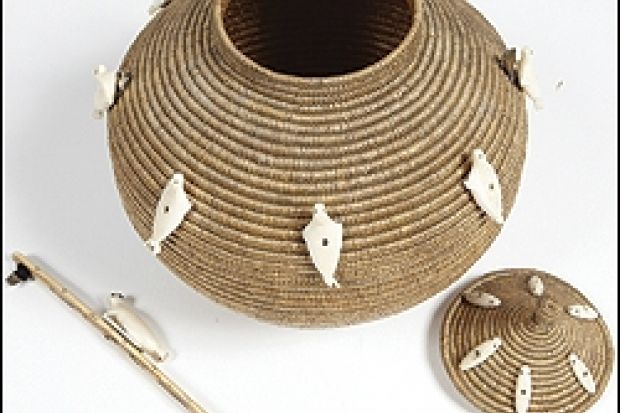The ceremonial wickerwork shield is 19th century and comes from the Solomon Islands, with tiny fragments of nautilus shells attached to a layer of gum made from the kernel of the "putty nut".
The twined "sally bag" from Washington or Oregon in the US Pacific Northwest, dating back to 1900 or so, was used for carrying items. Although it is largely created from hemp and corn husks, the rim is sewn with a border of European cotton cloth.
All three form part of the Robert and Lisa Sainsbury Collection of world art, which is on permanent display at the Sainsbury Centre for Visual Arts on the campus of the University of East Anglia.
They are among the artefacts highlighted in its temporary exhibition Basketry: Making Human Nature, which also features an Amazonian cassava squeezer, Cameroonian fish traps, Egyptian shoes, a Peruvian reed boat, a woven wall panel from Guy's Hospital in London and specially commissioned works by contemporary artists.
Send suggestions for this series on the treasures, oddities and curiosities owned by universities across the world to: matthew.reisz@tsleducation.com.
Register to continue
Why register?
- Registration is free and only takes a moment
- Once registered, you can read 3 articles a month
- Sign up for our newsletter
Subscribe
Or subscribe for unlimited access to:
- Unlimited access to news, views, insights & reviews
- Digital editions
- Digital access to THE’s university and college rankings analysis
Already registered or a current subscriber? Login
